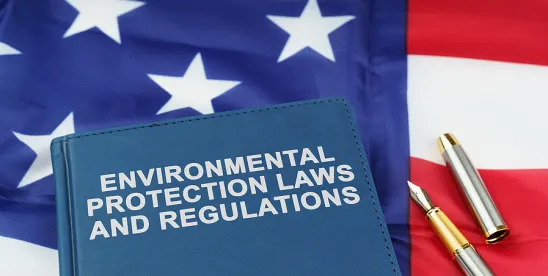Mr. Kyle Kunkler has been appointed the Deputy Assistant Administrator for Pesticides at the U.S. Environmental Protection Agency (EPA) Office of Chemical Safety and Pollution Prevention (OCSPP). Since February 2020, Kunkler has been directing government affairs for the American Soybean Association (ASA) in Washington, D.C., with a focus on the biotech and crop protection portfolio. Kunkler, before joining ASA, spent three years with the Biotechnology Innovation Organization (BIO), managing federal government affairs on food, agriculture, energy, and environmental policy. Previously, he served on the legislative teams for Representative Dan Newhouse (R-WA) and former Representative Cathy McMorris Rodgers (R-OR), as well as with the National Association of Insurance and Financial Advisors.
The ASA has been among the most active agricultural trade groups in Washington, D.C., involved in the development of EPA pesticide policies implemented in response to the Endangered Species Act (ESA). Soybeans are grown on over 80 million acres each year and, like other major crops, use a variety of pesticides. It stands to reason that Kunkler will be familiar with issues related to the Federal Insecticide, Fungicide, and Rodenticide Act (FIFRA).
Since 2021, under the Biden Administration, EPA has refined its ESA program to assess possible risk to species and reduce potential harms with a “mitigation point” approach. Following an ecological assessment, EPA will require a certain number of mitigation points dependent on the review of ecological risks to species and their habitat. The scheme is designed to prevent off-site migration through air or soil, what EPA describes as “avoidance and minimization” of off-site movement toward habitats of threatened and endangered species.
During Kunkler’s tenure at ASA, the organization has submitted extensive comments to the docket regarding EPA’s ESA program. EPA issued draft “Strategy” documents for the protection of endangered species from herbicides in July 2023, released an update to the draft Strategy in April 2024, and made final its Herbicide Strategy in August 2024. A draft Insecticide Strategy was released in July 2024 and issued as final in April 2025. EPA plans ESA Strategies to follow for fungicides, rodenticides, and disinfectants. The key concept for protecting species has evolved over time; with these Strategies came the “points” system. A bespoke approach is taken, with the number of assigned points tailored to the specific crop, pesticide, and the expected range of a threatened or endangered species. Pesticide applicators can then choose a combination of mitigation measures to reach the EPA’s required number of points for a particular pesticide and crop combination.
In 2024, ASA conducted surveys of its members to estimate the difficulty that soybean growers may face in complying with the points scheme. After EPA issued its first ESA draft Strategy for herbicides, the ASA survey (conducted July 2024) indicated that a large fraction of soybean growers will be unlikely to attain enough mitigation points to meet their EPA ESA obligations. After further refinements to the EPA strategy were made in response to comments (by soybean growers and many other stakeholders), ASA did another survey. This later ASA survey (conducted October 2024) indicated that most (71%) of the responding soybean growers should be able to attain the maximum number of mitigation points that EPA states will be needed by any grower to use any pesticide product. Since not every crop-pesticide-location may need the maximum number of points, this is a hopeful sign that mitigation strategies will be available to (soybean) growers as EPA further develops its ESA program. To be sure, as DAA for Pesticides, Kunkler will have more than just ESA compliance on his plate, but his familiarity with the ESA program will be an asset in his new position.
The ESA program will affect much more than soybean production, and other grower groups (e.g., specialty crops such as fruits and vegetables) may face additional ESA compliance hurdles. EPA’s program will next enter the implementation phase — how to ensure mitigation requirements are incorporated on labels, developing training programs and educational materials regarding compliance with new requirements, and overall integration of species protection measures with current production systems. For EPA’s pesticide program, ESA assessment and compliance issues will likely continue to dominate much of the program’s attention. At the same time, the pesticide program faces the constant pressure of meeting deadlines for registration review of active ingredients and the Pesticide Registration Improvement Act of 2022 (PRIA 5) deadlines for decisions on submitted registration applications.
Mr. Kunkler, like most political appointees at EPA, is likely to have a rather full agenda filling any given day. A draft Fungicide Strategy is anticipated by spring of 2026.



 />i
/>i
